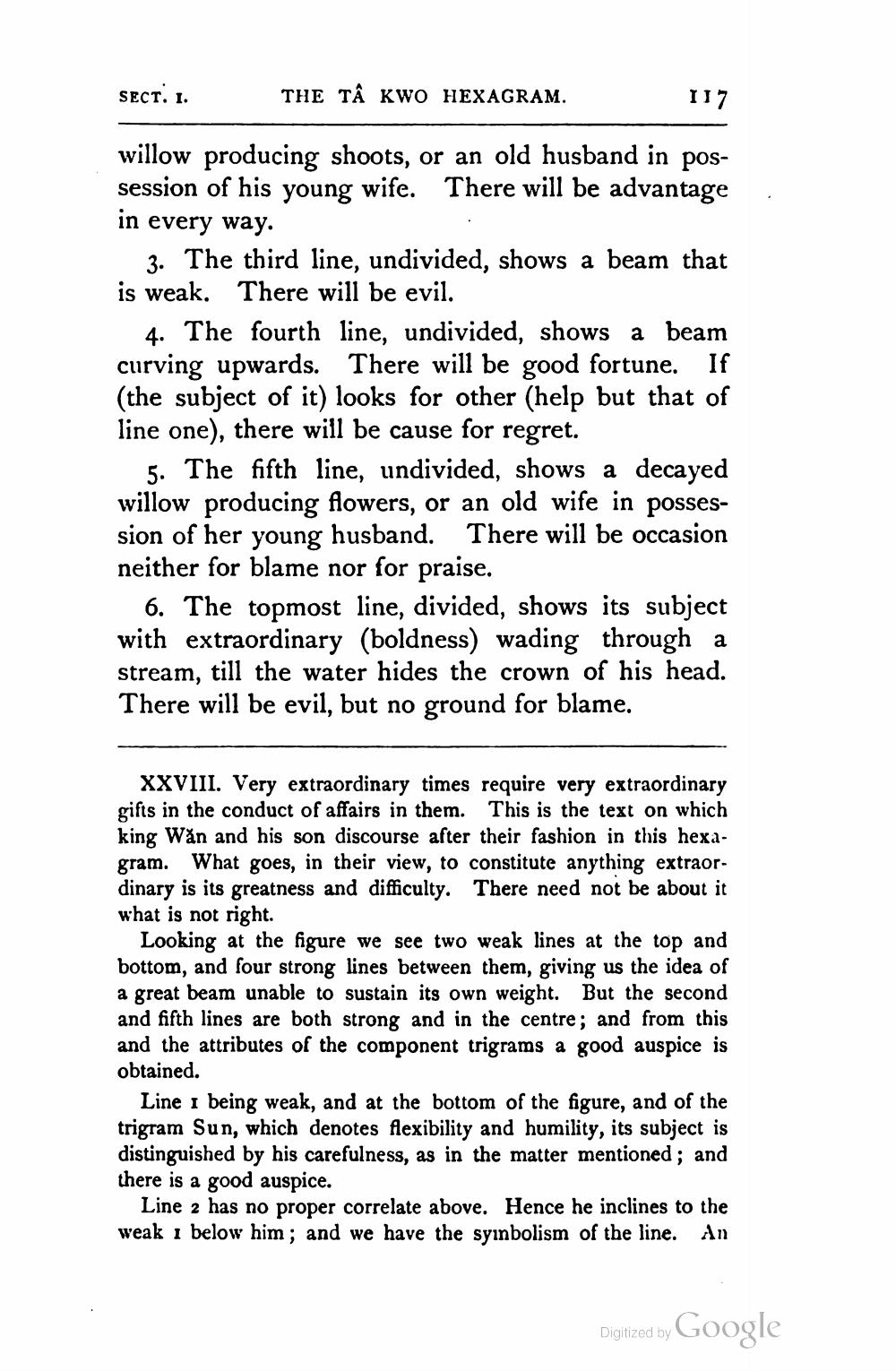________________
sect. 1.
THE TÂ KWO HEXAGRAM.
117
willow producing shoots, or an old husband in possession of his young wife. There will be advantage in every way.
3. The third line, undivided, shows a beam that is weak. There will be evil.
4. The fourth line, undivided, shows a beam curving upwards. There will be good fortune. If (the subject of it) looks for other (help but that of line one), there will be cause for regret.
5. The fifth line, undivided, shows a decayed willow producing flowers, or an old wife in possession of her young husband. There will be occasion neither for blame nor for praise.
6. The topmost line, divided, shows its subject with extraordinary (boldness) wading through a stream, till the water hides the crown of his head. There will be evil, but no ground for blame.
XXVIII. Very extraordinary times require very extraordinary gifts in the conduct of affairs in them. This is the text on which king Wån and his son discourse after their fashion in this hexagram. What goes, in their view, to constitute anything extraordinary is its greatness and difficulty. There need not be about it what is not right.
Looking at the figure we see two weak lines at the top and bottom, and four strong lines between them, giving us the idea of a great beam unable to sustain its own weight. But the second and fifth lines are both strong and in the centre; and from this and the attributes of the component trigrams a good auspice is obtained.
Line 1 being weak, and at the bottom of the figure, and of the trigram Sun, which denotes flexibility and humility, its subject is distinguished by his carefulness, as in the matter mentioned ; and there is a good auspice.
Line 2 has no proper correlate above. Hence he inclines to the weak 1 below him; and we have the syinbolism of the line. An
Digitized by Google




